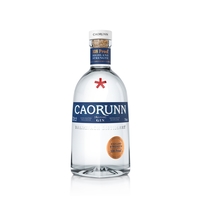|
|
 |
|
July 31, 2022
The hot and muggy days of summer call for zippy refreshing wines. While many people reach for rosés at this time of the year, I find most of them to be innocuous, lacking character. Instead, I suggest trying Spanish whites from Rueda. What? White wines from Spain? I know, when most people think of Spanish wine, they think red. Rightly so. Many Spanish reds are divine. Just think of the grand wines from Rioja, Priorat, Ribera del Duero,  or Toro. But I’m here to tell you that for summertime drinking you want to explore Rueda, a Denominación de Origen (D.O.) located on a plateau in the region of Castilla y León in northwestern Spain where the Verdejo grape reigns supreme. or Toro. But I’m here to tell you that for summertime drinking you want to explore Rueda, a Denominación de Origen (D.O.) located on a plateau in the region of Castilla y León in northwestern Spain where the Verdejo grape reigns supreme.
Verdejo (which is not to be confused with the Portuguese grape, Verdelho) has been grown in this part of Spain for at least a millennium. Researchers think the grape originated in North Africa, which explains its ability to thrive in the intensely sunny, dry climate of Rueda. Verdejo typically produces crisp, edgy white wines with lightly floral aromas. Regulations require a wine labeled Rueda to contain at least 50 percent Verdejo. Other grapes in the blend might be Viura (a.k.a. Macabeo) or Sauvignon Blanc. In 2019, Viognier and Chardonnay were allowed in the blend. It remains to be seen how the inclusion of these varieties will alter the character of the wines. Wine labeled Rueda Verdejo must contain at least 85 percent Verdejo, but in practice most producers use Verdejo entirely. Occasionally, you might see a wine labeled Rueda Sauvignon, which means that at least 85 percent of the blend came from Sauvignon Blanc.
Consumers will start to see two new categories, Gran Vino de Rueda, and Vino de Pueblo, on labels. Gran Vino de Rueda wines must be made from vines that are at least 30 years old whose yield is limited, which theoretically should lead to more complex and elegant wines. In keeping with the world-wide trend of identifying origins, Vino de Pueblo on the label allows the village name to appear if 85 percent of the grapes came that village. Presumably, certain villages are home to better terroir, which produces better grapes.
Here's a trio of Rueda, all made entirely from Verdejo, that show the wonderful range of wines from that D.O.
Bodegas Vatan, Old Vines Verdejo, “Nisia,” 2021 ($16, Jorge Ordonez Selections): Hints of white flowers draw you in. Then, the electricity in this youthful wine awakens the palate and perfectly balances the stone fruit flavors. Citrus zing in the finish just amplifies its charms. Sip it by itself or drink it with fresh seafood or a summer salad. 92 Points
Buil & Giné, Rueda Verdejo, "Nosis” 2020 ($17, Think Global Wines): Buil & Giné, based in the Gratallopes in Priorat and one of the top producers there, expanded their holdings to Rueda a couple of decades ago. Their “Nosis” bottling, made from 35-year-old vines, displays lovely floral aromas and cutting, crisp citrus flavors that balance its substantial density. Weightier than the Nisia, it is still not a heavy wine. 91
Bodegas Burdigala, “Campo Eliseo” 2016 ($49): The French team of François Lurton and Michel and Dany Rolland shows how beautifully the wines from Rueda can develop. Their more generous 2016 Campo Eliseo has traded youthful exuberance for a creamy and nutty complexity that comes with bottle age. Still supported by good vibrancy, it comes across as a far more “important” wine than most Rueda releases. 93
Posted by Michael Apstein at 11:47 AM
|
|
July 20, 2022
A few years ago, while on a Scotch-drinking tour of the Highlands, I paused for a few hours to contemplate a white liquid with no odors of peat and no traces of barrel aging – gin. My guide was Simon Buley, the Welsh-born cellar master at Balmenach Distillery, a 200-year-old facility that typically produces the brown stuff.
Buley wasn’t leading me on a tasting of Scotch or gin, but rather taking me on a short tour across the Burn of Cromdale, past a brace of pheasants and a harried ewe chasing her straying lamb, in search of what he calls “my five Celtic ingredients” to add to his Caorunn gin botanicals. They include the bloom of bog myrtle, heather, Rowan berries, dandelion leaves and Coul Blush apple. Later in the season, when the ingredients are all collected and dried, he would add them to juniper berries and five other ingredients and place them on a metal  screen for the vapors to pass through and incorporate. While Scotch is still the major product of the distillery, Caorunn (pronounced “ka-roon”) gin made there has caught on with spirits aficionados in the U.S. and elsewhere. screen for the vapors to pass through and incorporate. While Scotch is still the major product of the distillery, Caorunn (pronounced “ka-roon”) gin made there has caught on with spirits aficionados in the U.S. and elsewhere.
So it was with a smile of remembrance – and anticipation – that I reacted when a bottle of Buley’s Caorunn “Highland Strength” gin recently arrived on my front doorstep. The label said it was a blazing 49% ABV, which marketers for the distillery are touting as being the ideal strength to “enhance cocktails.” In an accompanying press release, Buley gave this explanation: “We find that with this higher ABV, the alcohol quickly evaporates in your mouth, leaving behind our beautiful botanical flavors that linger on your palate with a luxurious finish.” I haven’t tasted it in a cocktail yet – if I must drink gin I want to drink it neat – but Highland Strength was lilting, fragrant and complex on the palate.
Classes of beverage alcohol tend to borrow and steal from each other in search of market share, and in recent years craft distillers have tried to promote the fine-wine concept of “terroir” in their Bourbons or ryes. It is an  argument that brings a little curl of amusement to the left corner of my mouth as it is being made, and I’m not going to be nodding my head in agreement when a distiller tries to explain how the taste of terroir imparted in triple-distilled whiskey from rye grown in a field in Kansas differs from one whose rye is Kentucky-bred. argument that brings a little curl of amusement to the left corner of my mouth as it is being made, and I’m not going to be nodding my head in agreement when a distiller tries to explain how the taste of terroir imparted in triple-distilled whiskey from rye grown in a field in Kansas differs from one whose rye is Kentucky-bred.
But I’m intrigued by the idea of terroir in gin.
Gin’s flavors are gained through a process of infusion. While juniper berry is the defining flavor of gin, usually a dozen or so total ingredients – defined as “aromatics or their extracts, essences or flavors” – are in the final blend. Usually, distillers keep the exact components as their recipes secret, though some, such as Buley, will tell the ingredients but not their proportions.
To my way of thinking, as Caorunn’s “five Celtic ingredients” come from the fields, woods and orchards around the distillery, these distinctive local contributions to the taste of the gin constitute its terroir. If gin distillers anywhere in the world want to use in their brews significant botanicals collected near their distilleries, then to me their gins may “taste of a place,” the phrase winemakers love to claim for their production.
In a recent article in the Wall Street Journal about “briny gins,” writer Megan Krigbaum explored those that taste of the sea – or at least of the seashore. One particularly interesting gin, Gray Whale, by implication claims the whole California coast as its terroir by adding to its flavor repertoire Big Sur juniper, Mendocino kombu (algae), Temecula limes, Sonoma pine needles and Santa Cruz mint. Another explored gin uses kelp as a botanical.
So I plan to do more exploration, neat dram by neat dram, of the different flavors of gin that come across my doorstep or are poured at the bar whenever my traditional Bloody Mary or Manhattan don’t look too promising. Maybe some of them, if the botanicals are gathered locally, might speak to me of their terroir.
A few years ago, I talked with Fritz Maytag about his multi-drink commercial endeavors – Anchor Steam beer, York Creek grapes (which Paul Draper first popularized in his wines), Old Potrero rye whiskey and Junipero gin. Although always chatty and insightful, Maytag clammed up when I asked about his gin botanicals bill for Old Junipero. “It’s like grandma’s brownies,” he explained. “Would you go to her house to eat them if you had the recipe?”
Grandma owns a mean terroir.
Posted by Roger Morris at 4:17 PM
|
|
 |
|